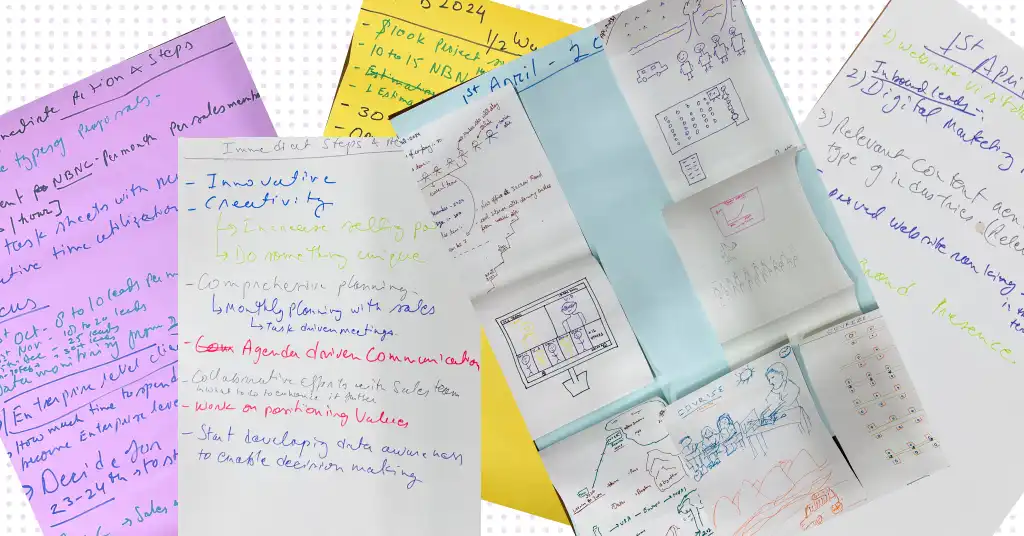Have you heard about the OKR Model?
If yes – great!
If not – here’s a brief,
The OKR model stands for Objectives and Key Results Model.
It’s a popular goal-setting framework used by many organizations to achieve better focus, alignment, and transparency.
A little breakdown for you – (BTW you can skip this part if Wikipedia kind of information is something that irritates you!)
What it is – OKRs consist of two key elements
1) Objectives – These are the ambitious and qualitative goals one wants to achieve. They define the “what” – what you want to accomplish in a specific area.
2) Key Results – These are measurable metrics that define how you’ll reach your objectives. They define the “how” – specific, time-bound, and ambitious yet achievable ways to track progress towards the objective.
The origins of OKRs are traced back to management guru Peter Drucker, who emphasized the importance of management by objectives (MBO) in the 1950s.
However, the concept of OKRs as we know them today is widely credited to Andy Grove, former CEO of Intel.
In the 1970s and 80s, Grove implemented a goal-setting system at Intel that emphasized ambitious objectives and measurable results.
This system heavily influenced what we now call the OKR Method.
Why it was introduced?
Traditional goal-setting methods often lacked clarity, focus, and a sense of ownership.
OKRs address these issues quite successfully
1) Encouraging Focus
OKRs help everyone in the organization to understand the overall direction and what’s most important.
2) Promoting Alignment
Objectives cascade down through the organization, ensuring individual and team goals contribute to the bigger picture.
3) Improving Transparency
Regular discussions and check-ins around OKRs foster open communication about progress and challenges.
4) Embracing Ambitiousness
While aiming high, OKRs acknowledge that achieving 100% of every Key Result might not always be possible, keeping motivation high and encouraging continuous efforts towards improvement can help us attain some sensible results.
OKRs provided a way to achieve desired goals and helped organizations like Intel become more agile and innovative.
Well since then many organisations have adopted and implemented the OKR Model to gain significant benefits.
What made us adopt the Concept of the OKR Model?
When we learned about the OKR model, we were eager to understand how it could benefit our organization. We wanted to see how we could adopt it and use it to make positive changes.
Our Organization Development Advisor, Mr. Rahul Thapar, suggested a great approach.
He recommended holding small meetings at all levels of the company. In these meetings, the team members were asked about their short- and long-term goals.
By understanding the team members’ aspirations, we could then analyze how those goals align with the company’s objectives and overall vision.
Why was this important?
As a startup, it’s crucial for us to go beyond simply establishing a presence.
We need to make a real impact!
To achieve that, we need everyone to be on the same page, working towards the same goal.
Our Approach to OKR Model Implementation – Thought and Action
Our process started by fostering open communication through team meetings. These meetings were intended to ensure that everyone is aligned and motivated to contribute their best.
Take a look at what we did in the name of “Let’s get to know better” – Meetings –
Step 1 – Set Some Realistic Goals
We began by inviting different teams to separate meetings.During these sessions, each team was tasked with outlining their desired departmental achievements for the next six months.
Step 2 – Visualizing Success
Next, we provided each team member with coloured pens and paper and encouraged them to visually represent their aspirations for the next six months and show each other what they look like!
The pictures and the thoughts were really interesting though!

Step 3 – Bridging the Gap
When images look good and appear to be achieving something, then one must have a plan to make it happen.So, yes, the next move was to ask what they think they need to do – to make it happen.
And this is where the whole story became clear to everyone – Seriously!
Step 4 – Collaboration and Clarity
Unfortunately, the “what exactly to do” stage resulted in some confusion. Team members weren’t sure if they were expected to independently define a step-by-step plan.
Step 5 – Leadership Intervention and Shared Ownership
To address the confusion, our leadership team stepped in. They offered their perspective on short-term goals – achievable objectives that the organization should strive for within the next three months, all aligned with the broader vision.
The best part – when our leaders cleared the air!
They asked us to decide and prepare a plan that we must follow to achieve what we all think we should.
Now you must be wondering – just let people decide what they should do – and they will do it!
Where have you seen it happening?
But here’s the catch – that was not the goal!
Actually, our leaders just gave all of us a very clear idea of what the organization is aiming to achieve.
This might seem like something called the “bare minimum” to you, but these small sessions changed a lot for us. Yes, only letting people know clearly what the organization aims to achieve!
But why?
Impact of Successful OKR Implementation on team alignment and process improvement
The idea of this entire session was not to provoke someone, but to evoke the sense of what the expectations are – what we have been doing, and whether the efforts we are making are enough to achieve what we think we should.
You must have seen those reels where people play the whisper game, trying to convey a message that never gets to the end in the same way it was whispered!
That’s the same with organizations!
The Vision and Mission are something that everyone knows, but do they know exactly what it is?
We all know what we must do when we work for a particular role, but how many of us even have an understanding that whatever we are doing – is it really something that can help an organization achieve what it’s aiming for?
Not too many!
And that’s why there is a strong need to let people working under the same roof know what the end goal is and check if their actions are aligned with it or not!
Well, this particular activity really made a difference for us in several ways
- Different teams started planning in advance what they wanted to achieve in the next two months.
- It made them think one question before whatever they are planning to do, which is – is it something that the organization really needs?
- And if not, what is Plan B that can be adopted to make it work and whether that one aligns with the end goal or not?
- It helped us set our priorities straight and act upon them singularly.
Most importantly, it evoked a sense of responsibility that needs to be taken seriously at every level of an organization!
It is not that we like to brag, but now our teams have a consciousness of what can work for us in the long run – and to make that happen, what are the small steps that need to be taken to march towards the end goal with one step every day in the right direction!
When we reflect on our plans and investigate them with the end goal in mind, things become clear and allow us to think in a different way with a purpose!
And when each member of an organization works with a single purpose in mind, success seems achievable as everyone is marching in the same direction – with the same intention!
In Conclusion
This was our example of how implementing the OKR model in our thoughts and plans benefited in improving our work process and channelling the team’s energy.
And now, it is at the centre of how we work at Covrize.
There are many organizations that have adopted various methods and have tried to encourage employees to make plans that align with the goals of an organization and act upon them sincerely – but some work and some don’t.
It’s not the fault of the method – it’s the sense of responsibility and commitment missing!
It’s about being conscious and responsible for what we do – either in personal or in professional life.
And it’s important for all of us to be conscious and responsible no matter what we do – because a destination can only be reached if we keep finding the right direction every time and keep moving forward!
And that’s what OKRs have made possible for all of us!







